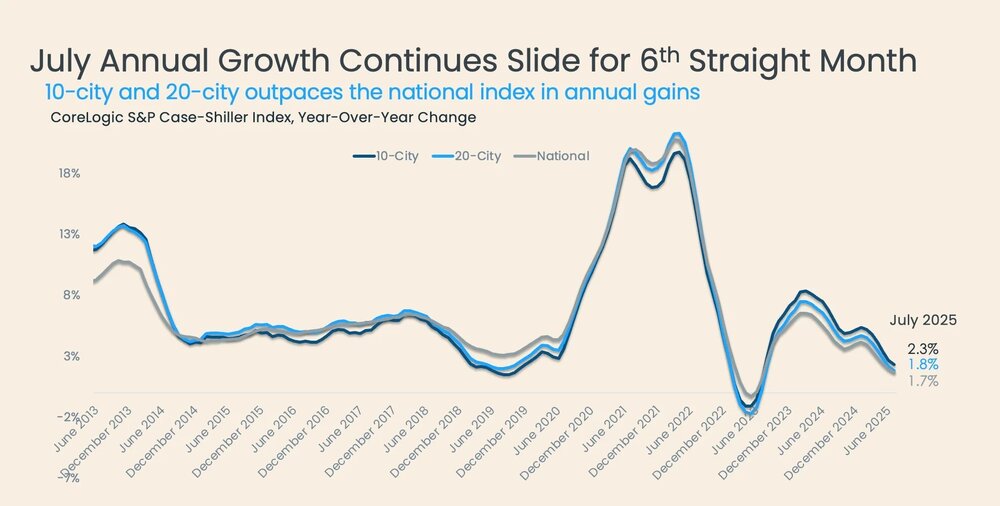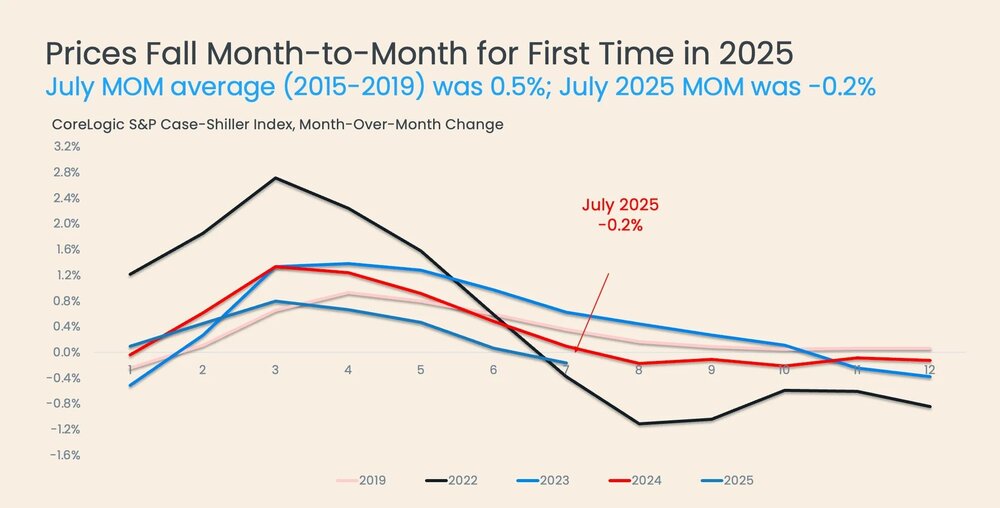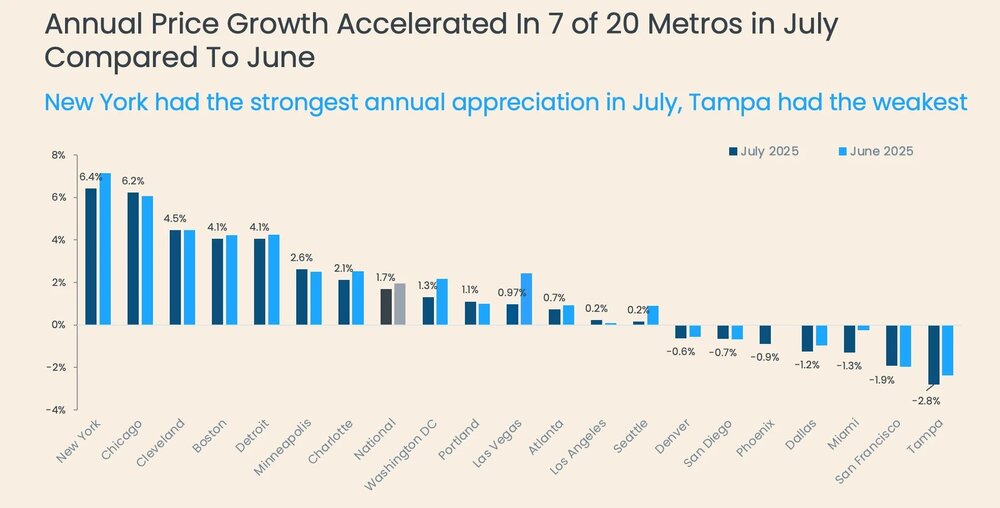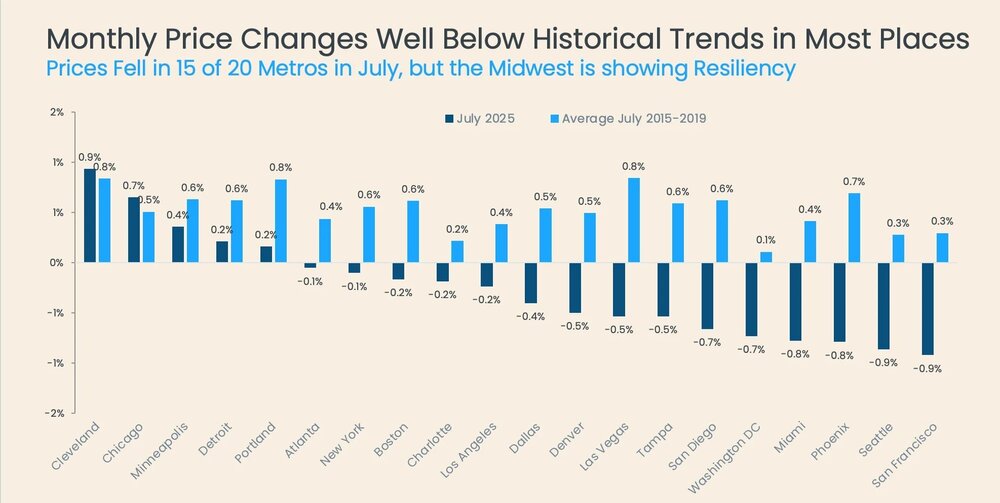
After a strong start to the year, the U.S. housing market hit a patch of weakness in July, with home-price growth slowing to its lowest level in 2025 and signaling that a broader cooling trend may be underway.
The S&P Cotality Case-Shiller National Home Price Index rose 1.7% year-over-year in July, down from a 4.1% pace in January. On a month-to-month basis, the non-seasonally adjusted index slipped 0.2%, marking the first monthly decline of the year and well below the pre-pandemic July average of a 0.5% gain.
“The market has lost momentum,” said Thom Malone, principal economist at Cotality. “Midwestern cities are still benefiting from relative affordability, but most other regions are showing cracks as affordability pressures and rising insurance costs weigh on demand.”
Regional Shifts
The slowdown has not been evenly distributed. Cleveland and Chicago stood out as rare bright spots, with annual gains of 4.5% and 6.2%, respectively, and monthly increases stronger than their pre-pandemic norms. In total, seven of the 20 cities tracked by the index posted year-over-year price gains.
At the other end of the spectrum, Tampa led annual declines with a 2.8% drop, followed by Miami, San Francisco and Dallas, where prices fell more than a percentage point. Western markets in particular bore the brunt of the July pullback. San Francisco home prices fell 0.9% in a single month, the sharpest drop among major metros, while Seattle, Phoenix, Miami and Washington, D.C. also saw notable declines.
Pressure Across the Board
Weakness was evident across housing segments. Prices for low-tier homes fell 0.2% in July, while mid-tier homes dropped 0.4% and high-tier homes slipped 0.3%. Only Chicago and Minneapolis managed to post gains across all price categories.
The uneven performance suggests affordability dynamics are reshaping demand. Inexpensive Midwestern metros continue to attract buyers priced out of coastal markets, while insurance premiums tied to climate risks are beginning to erode demand in Southern and Western hubs.
Inventory on the Rise
Adding to the pressure, listings are creeping higher. Rising supply could push sellers to make concessions after several years of extraordinary price growth. Still, economists caution against expecting a dramatic correction.
“Without a significant external shock, any pullback is likely to be modest,” Mr. Malone said. “Falling interest rates and a gradual buildup of inventory may eventually reset the stage for renewed growth, but that turning point could be some distance away.”
Looking Ahead
The Case-Shiller data suggests the housing market is entering a fragile phase: not in free fall, but no longer enjoying the robust appreciation that defined the post-pandemic era. With more metros slipping into negative territory, analysts say 2025 is shaping up to be a year of transition–one where affordability and local fundamentals dictate performance more sharply than national averages.




Sign Up Free | The WPJ Weekly Newsletter
Relevant real estate news.
Actionable market intelligence.
Right to your inbox every week.
Real Estate Listings Showcase
Please visit:
Our Sponsor
